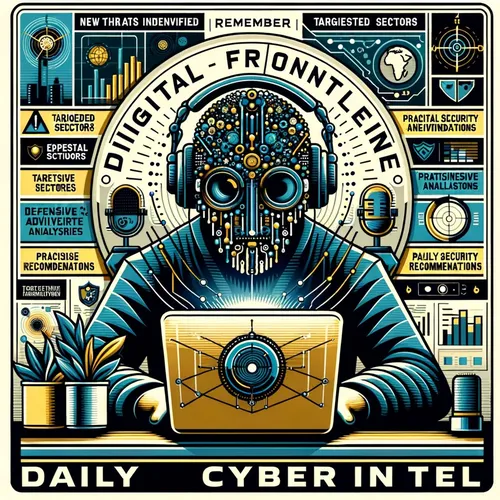Juicy! China's Cyber Spies Caught Red-Handed: Hacking, Attacking, and Racking Up Victims Worldwide
- Author
- Quiet. Please
- Published
- Mon 21 Jul 2025
- Episode Link
- https://www.spreaker.com/episode/juicy-china-s-cyber-spies-caught-red-handed-hacking-attacking-and-racking-up-victims-worldwide--67059328
This is your Digital Frontline: Daily China Cyber Intel podcast.
Today’s digital frontline is buzzing, so let’s jump right in—this is Ting, here to break down the freshest intel on Chinese cyber activities zeroed in on US interests over the past 24 hours.
First, the big picture: Microsoft’s latest report drops a bombshell, showing how cybercriminals and nation-state actors are blurring lines, with China and Russia increasingly leveraging private cyber mercenaries to weaponize everything from hacking and malware to sophisticated spear phishing campaigns. Tom Burt, Microsoft’s VP of Customer Security and Trust, notes over 600 million incidents a day targeting their customers—let that sink in. While Russia and Iran are locked on influencing the US presidential campaign, Chinese operators are laser-focused on down-ballot races, state infrastructures, and, of course, high-tech industries. Chinese-linked campaigns have been relentless, targeting not just the US but Taiwan’s chip industry, Europe, and, ironically, even Russia.
The espionage clan in the spotlight right now is UNC3886, flagged as a “China-nexus” group by Mandiant, and implicated in attacks on defense, tech, and telecom targets. Singapore’s top national security official, K. Shanmugam, called out these actors by name, warning of threats to critical sectors like energy, finance, healthcare, and transport. Don’t forget the African angle—Kaspersky just attributed a fresh campaign hitting government IT services in Africa to China’s notorious APT41, renowned for their global sights and their Swiss Army knife toolkit. These folks are using everything from SharePoint as covert control channels to DLL side-loading, sidestepping classic detection methods.
Back stateside, the US FCC is not sitting still. FCC Chairman Brendan Carr has announced aggressive measures, ready to clamp down on submarine cables involving Chinese manufacturers like Huawei and ZTE. Why the urgency? Last year’s “Salt Typhoon” cyber attack still stings, and with 99% of transoceanic internet traffic flowing through these pipes, any vulnerability is code red. The FCC is rolling out a sort of “Rip and Replace 2.0,” but analysts like Will Townsend point out: funding is a nightmare, and it’s tough to sniff out exactly how many cables are already compromised.
Defensively, businesses need to stay on the move: Step up network segmentation, monitor for living-off-the-land techniques like SharePoint abuse or DLL side-loading, and harden endpoint controls. Analysts at Seqrite Labs highlight the increasing use of spear-phishing with LNK files, Visual Basic scripts, and even RATs like the Blister and INET variants. For IT, keep threat intelligence feeds tight and test your incident response playbooks—today’s bats are swinging faster than ever.
Finally, a practical rec for the security teams out there: Always double-check your cloud and hybrid infrastructure for unmonitored hosts or service accounts being abused. Patch and log, rinse and repeat.
Thanks for tuning in! If you want your daily dose of cyber intrigue, don’t forget to subscribe. This has been a quiet please production, for more check out quiet please dot ai.
For more http://www.quietplease.ai
Get the best deals https://amzn.to/3ODvOta
